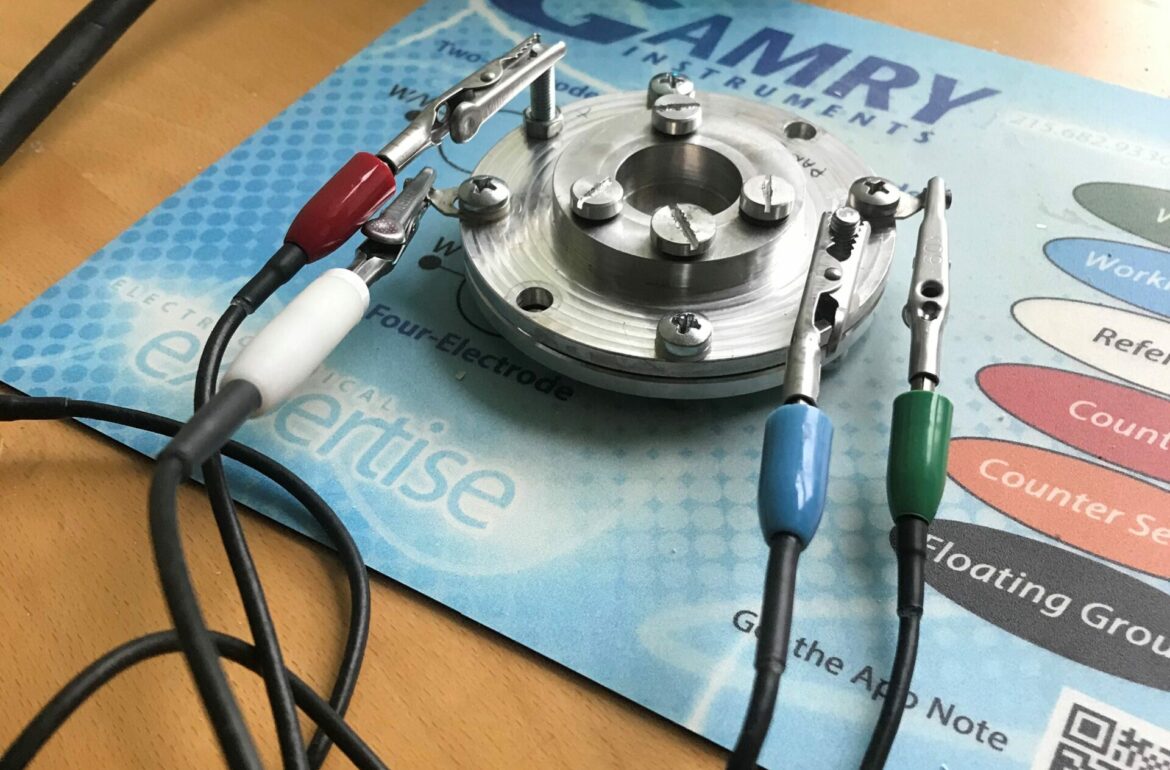Over the past few years, researchers from Taltech Laboratory of Polymers and Textile Technology in cooperation with the company Skeleton Technologies, Institute of Chemistry of University of Tartu and the European Space Agency (ESA) have been engaged in the development of novel extremely durable supercapacitors.
The head of the working group, Professor at TalTech Laboratory of Polymers and Textile Technology, Professor Andres Krumme says, “The importance of supecapacitors in modern technology is growing. Supercapacitors are energy storage devices, which are used in applications requiring rapid discharge of large amounts of energy.”
Supercapacitors are made by electrospinning and they consist of nanofibrous non-woven materials. The fibres in these materials are 10 to 100 times thinner than a human hair. The fibres contain carbon particles of submicron size that store energy and are held together by a polymeric binder. The fibrous structure developed by the researchers is flexible and up to 20 times stronger than the structures used in conventional supercapacitors.
One of the partners of the research project – the company Skeleton Technologies – has long experience in the production of carbide-derived carbon based supercapacitors. Such material has two important properties for storing energy: exceptionally high specific surface area (total surface area per unit of mass) and particularly good energy storage capacity.
The flexibility, lightness and great strength of the new supercapacitors are especially important, for example, in space technology. In view of the limited space available on satellites, the walls and other irregular surfaces of a satellite can be successfully covered with this flexible material for making maximum use of the space. The exceptional strength and vibration resistance of a supercapacitor are necessary, for example, at the launch of a satellite.
Professor Krumme says, “In the course of research, our team at TalTech Laboratory of Polymers and Textile Technology developed the most optimal carbon milling method (ultra-fine, not reducing the so precious specific surface area), found the most suitable polymeric binders for a supercapacitor and the most optimal electrospinning parameters.”
The supercapacitors being developed are intended to be used for a short-time strong current–pulse discharge:
– in launch and control devices of rocket engines;
– for cyclic power supply of satellites when they are out of the sunlight;
– upon opening and moving solar panels on satellites.
Until now, the working group has gone through the chain from an idea to a laboratory prototype and the aim is to complete first pilot products in the next 3-5 years.
Currently, supercapacitor modules are used, for example, in automotive industry (as an engine starting aid or for storing braking energy), in hoists and cranes (for energy recovery during lowering and lifting). Flexible electronics can be applied in smart textiles (energy from the movements of the wearer is harvested and stored for later use). According to Professor Krumme, the future prospects include using smart materials for health analysis and monitoring of elderly people and wider use of polymers of natural origin, biopolymers.
The research group published the article “Directly electrospun electrodes for electrical double-layer capacitors from carbide-derived carbon” in the Journal of Electrostatics.
Additional information: Professor at TalTech Laboratory of Polymers and Textile Technology Andres Krumme, andres.krumme@taltech.ee
Kersti Vähi, TalTech Research Administration Office
 Back
Back



